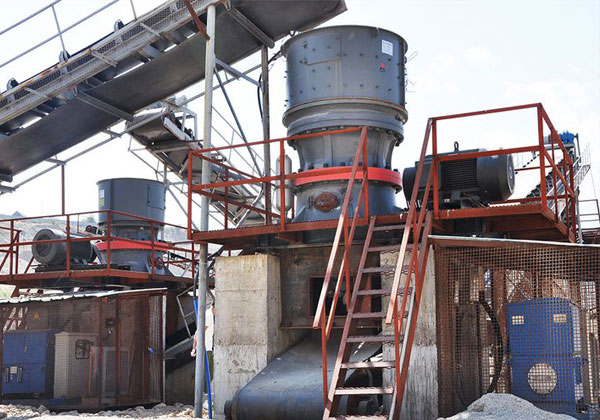In the production of high-quality aggregates for construction, mining, and infrastructure projects, efficient crushing plays a crucial role. Secondary and tertiary crushing stages are essential for refining raw materials into uniformly sized particles suitable for various applications. Among the key equipment used in these stages, cone crushers stand out for their efficiency, precision, and versatility.
Why Use Cone Crushers for Secondary & Tertiary Crushing?
Cone crushers are ideal for secondary and tertiary crushing due to their ability to handle hard and abrasive materials such as granite, basalt, quartz, and iron ore. They utilize a compressive crushing mechanism, where material is squeezed between a rotating mantle and a stationary concave liner, ensuring a consistent and controlled output.

Key Advantages:
- High Reduction Ratio – Capable of processing large feed sizes and reducing them to fine or medium-sized aggregates.
- Uniform Particle Shape – Produces well-shaped cubical aggregates, enhancing the quality of concrete and asphalt mixes.
- High Efficiency & Low Operating Costs – Modern cone crushers feature hydraulic adjustments, automated controls, and wear protection, improving productivity and reducing downtime.
- Versatility – Suitable for a wide range of applications, including mining, quarrying, and aggregate production.
Types of Cone Crushers for Aggregate Processing
- Multi-Cylinder Hydraulic Cone Crusher (HPT Series)
- Ideal for secondary and tertiary crushing in medium to large-scale operations.
- Features multiple hydraulic cylinders for enhanced power and stability.
- Offers a higher capacity and finer output compared to traditional cone crushers.
- Single-Cylinder Hydraulic Cone Crusher (HST Series)
- Well-suited for medium-hard to extremely hard rocks.
- Provides simplified hydraulic adjustment and reliable discharge control.
- Spring Cone Crusher
- A traditional design suitable for secondary crushing.
- Uses spring-based overload protection to handle uncrushable materials.
Selecting the Right Cone Crusher
When choosing a cone crusher for aggregates processing, consider the following factors:
- Material hardness & abrasiveness
- Desired output size & capacity requirements
- Automation and control capabilities
- Maintenance & operational costs
Popular cone crusher models like the HST Single-Cylinder Hydraulic Cone Crusher and HPT Multi-Cylinder Hydraulic Cone Crusher offer excellent crushing efficiency for aggregates production.
Investing in a high-quality cone crusher optimizes production, reduces operating costs, and ensures a superior finished product—key elements for success in the competitive aggregates market.
Would you like recommendations for specific cone crusher models based on your production needs? Let us know your requirements for a tailored solution!

